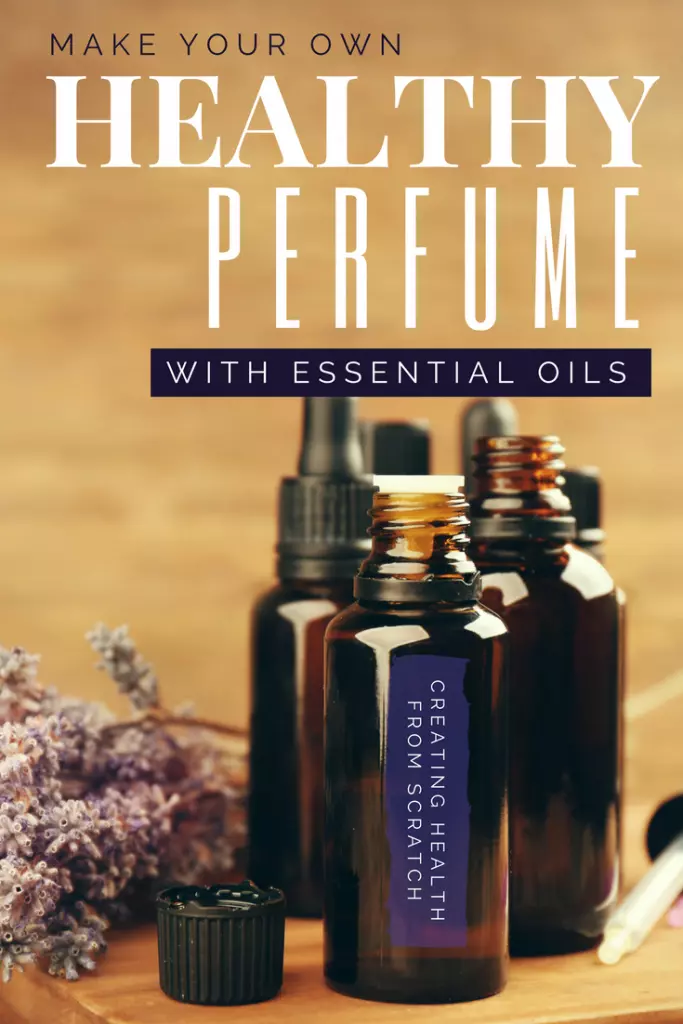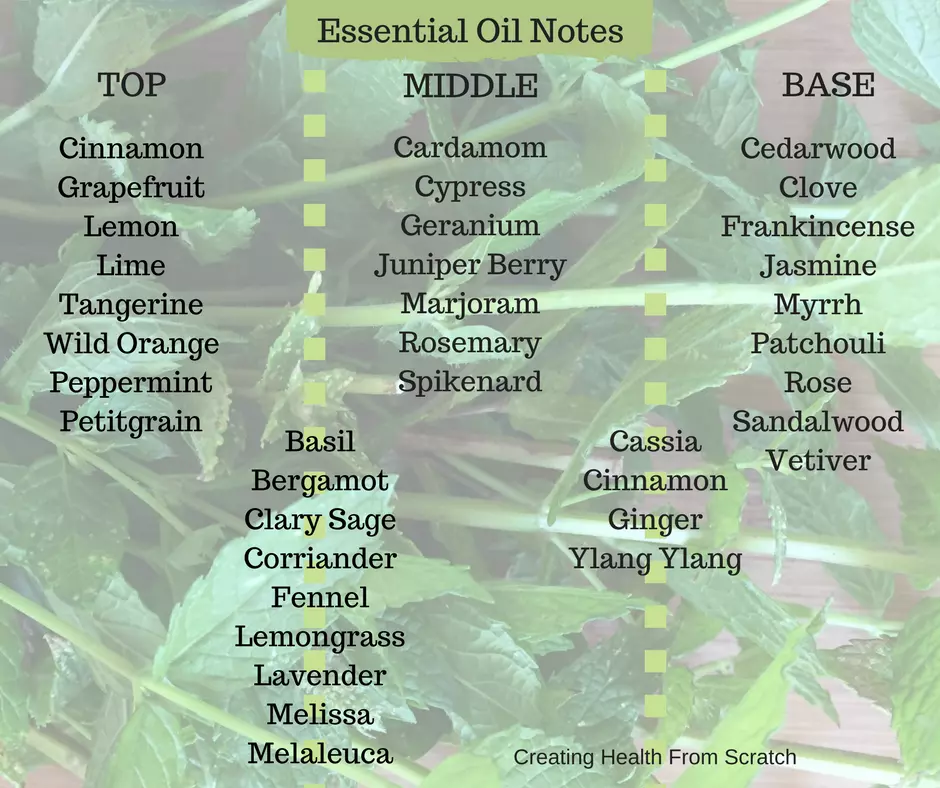
Make your own healthy perfume using essential oils! Why? For one, it’s fun. And you can customize the scent to you perfectly. It’s also non-toxic. (Did you know the perfume industry doesn’t have to tell you the chemicals they put inside their products? The EWG tested some of these perfumes and found 38 (non-listed) chemicals in 17 of the top brand name perfumes. They don’t have to disclose their toxins because they are considered ‘trade secrets’).
If fun, personalized scents and non-toxic solutions aren’t good enough reasons, I do have one more. Essential oils are good for you. If you wear them like perfume, you’re going to receive the health benefits from those oils. They will help support your immune system, balance your emotions and a host of other good things.
Can a perfume company say any of these things? Nope. (If you’d like to learn more about the toxins of perfume, check out this blog post.)
Basic Perfume Theory
So, let’s get to it and make some great smelling perfumes for ourselves and those we love.
A good perfume should contain, when possible, top, medium and low note oils. Each note serves a different purpose in the perfume making it beneficial to include some of each category.
Top Notes: Think of reaching high in the air to pick fruit from a tree. Most citrus oils are top notes. They’re lighter, usually uplifting, and very aromatic (but fade faster than other categories). They’re also usually the most inexpensive oils.
Middle Notes: Think of flowers and leaves. These notes last longer than top notes and are mellower smelling than base notes. These middle note oils are the balancing oils. They’re generally soft smelling and warm.
Base Notes: Think of roots and trees. Base notes are the strongest, longest lasting aromas. They’re grounding. And generally the most expensive oils.
Mixing the three notes together makes the top notes last longer, the base notes mellow out some and allows for a perfume that you can wear all day. A good rule of thumb for how much of which note to mix together is: 30% Top, 50% Middle and 20% Base. (Keep in mind that some oils don’t fit tightly in one category or the other, but are somewhere in between.)
Experiment
So how do you pick the oils you want to use? Experiment. Start first with oils in the top notes that you like. Combine a couple together and see how that smells. Slowly add middle notes and lastly base notes. A scent will change as it has time to mellow together as well as when it’s on your body. But this is a good start in mixing a perfume that you might really enjoy.
If you have a favorite commercial perfume, look up the ingredients and see if you can re-create it in a non-toxic way with essential oils.
Add a Mixer
Once you have an essential oil blend that you like, add either a carrier oil (like fractionated coconut oil or jojoba oil or almond oil, etc.) or 80-100 proof alcohol (vodka or rum) to the mix to help keep it mixed together.
Let it Age
Once it’s all mixed up, let it sit for a month or two for optimum curing or mellowing. (It also helps dissipate the alcohol smell if you’re using that).
Examples of Oils to Try Together:
Grapefruit, Ginger and Vetiver
Wild Orange, Ylang Ylang and Cedarwood
Tangerine, Lavender and Patchouli
Lemon, Lavender, Rosemary
Lemon, Peppermint, Rosemary and Juniper Berry
Here’s a sample recipe to get your started:
Storage
It’s a good practice to store your perfume made with essential oils in a dark glass bottle. A roller bottle will allow for easy application. Keep it in a cooler, dark place and always store with the lid securely attached (to keep the air from oxidizing it).
What about Cologne?
Cologne, basically, is just a less concentrated form of perfume. Often, it’s applied with a spray bottle. You can turn any of the above essential oil blends you come up with into a cologne easily.
Simply mix 2 tablespoons of a carrier oil with 30 drops of your essential oil mixture and add 6 tablespoons alcohol. Put this mixture in a bottle with a lid and let sit for 48 hours. After it’s cured, add 2 tablespoons distilled water and shake the contents well for a minute or so. Store this cologne in a glass spray bottle (preferably dark-colored).
If You Don’t Want to Mess with Any of It
There’s good news if all this formulation stuff is too much for you. There’s several oil blends that are great for perfume.
- Whisper
- Citrus Bliss
- Elevation
- Balance
- Hope
- Passion
- Motivate
- Cheer
- Console
- Forgive
- Peace
The Hope oil blend is extra special because it was formulated to help the Operation Underground Railroad help stop sex trafficking. Specially marked bottles of hope oil are given to people stuck in the sex trade. Each bottle contains a peel back label with instructions on how to get out. (Because it’s perfume and the sex industry, it doesn’t raise any suspicions if someone comes home with it.)
(Hope oil is also packaged for people to buy (without the special label) for $20 with 100% of that money going to OUR to help fund their efforts.)
No matter which route you go with healthy perfume options (experiment with your own combos, put together a recipe someone else made, or use a pre-mixed blend), you’ll be better off in the end. You won’t be wearing toxic chemicals and you’ll receive the health benefits of the essential oils you used. How many people can say their perfume not only doesn’t hurt them, but is GOOD FOR THEM, TOO?


